Cat Litter Box Care and Cleaning Basics You Should Know
I do not own a cat, but I have..And I know from that experience that there are few more difficult odors to control than those associated with a cat—specifically the litter box. Poor maintenance is enough to bring tears to your eyes. And not only yours, but to your kitty’s, too.
Yes, hate
Cats absolutely hate dirty litter boxes, and that drives them to find substitutes, whether a pile of clothes in a laundry basket or a corner of the carpet behind the door.
Your cat’s sense of smell is far stronger than yours, so a litter box that smells reasonably clean to you may outright stink to your cat.
In fact, the human nose contains about 5 million olfactory receptors that detect aromas, while a cat’s nose contains up to 200 million. Cats have an even better sense of smell than dogs!
Select the right box
Start with is a plain rectangular litter box, making sure that it is large enough that your cat can move around in it comfortably, with no overhang.
If the box is smaller than your cat, you’re just asking for trouble and I’m talking cat litter strewn outside of the box—or a box that is not being used at all.
You want it large enough to hold enough litter to preclude the bottom of the box from getting too soiled and wet between cleanings. If the box is too small or too many cats per box, prepare for your pets to choose another place in the house other than the box.
How many litter boxes?
The rule of thumb for indoor cats is one litter box per cat plus one extra. So if you have a cat, you need two litter boxes. Three cats? Four boxes. With multiple cats in the household, you can quickly feel like you’re running out of logical places for boxes.
That is when you should consider a “litter station,” placing the boxes side-by-side to accommodate more than one cat at a time. This kind of arrangement will make it easier to scoop and clean when the boxes are all located in the same area.
Box location
The location of the litter box is important. It should be as far from family and food activities as possible and placed away from doors and windows. Cats want privacy so this rules out the kitchen or other high-activity locations. The more secluded the area, the better.
Care and cleaning
Until someone figures out how to successfully potty-train cats including teaching them to flush, the next best option is to know how to keep your cat’s litter box clean and odor-free is Nok-Out.
Once you are sure that the cats love their litter, the boxes are well-placed and everything appears to be going well (save for that horrible odor), you’re ready to put Nok-Out to work.
I can tell you without any hesitation that Nok-Out was the only way we could keep litter box odor under control—and I’m talking about no odor at all.
1. Spray it with Nok-Out
Spray the bottom of the clean litter box with Nok-Out. You will do this each and every time you change and clean the box, which should be frequently. Nok-Out is ideal for litter boxes because other cleaners can leave a disinfectant or masking odor that repels cats.
2. Fill the box with litter
Consider a clumping unscented litter. You won’t need a pan liner and unscented litter tends to be preferred by most cats, which means they’ll use it happily.
Non-clumping litter is more challenging because depending on the number of cats in the house, it will likely need to be emptied and the box washed much more often as the urine will eventually collect at the bottom of the box. And that odor? Yikes! It will be so bad you’ll have tears in your eyes and very quickly.
Start with about two inches of litter and experiment until you find the right depth for your cat. Most litter manufacturers recommend using two to three inches of litter. However, if your cat is a deep scratcher, you may want to settle on three to four inches, You don’t your cat to feel as if he or she needs to dig all the way to the bottom of the box to get the job done.
Once the box is filled with clean, fresh, unscented litter, give the litter a final leveling off so the cats have a nice, smooth surface to dig in.
3. Spray again with Nok-Out
Next, lightly spray the top of the litter with Nok-Out.
Note: Diluted 50:50 with water, Nok-Out retains its effectiveness when treating cat litter. That means one gallon of Nok-Out can stretch to two gallons.
4. Remove solids
You’re going to need to dispose of your cat’s waste properly, and odor can be an issue. However, it will be much easier if you are disposing of clumps frequently and then frequently treating the urine-soaked litter with Nok-Out. Frequently!
Every time you remove solid wastes—multiple times a day or as clumps appear—smooth and spray the litter surface again.
Nok-Out is odor-free and leaves no smells that will offend the cats, but it does have residual effects that continue to combat odors long after the litter is dry. And it will extend the life of your litter because no odor will send the cats away and the box will remain sanitary and clean. That’s because Nok-Out (and also its companion product SNiPER) destroys everything in cat urine that causes odor and can create disease problems.
5. Litter Genie
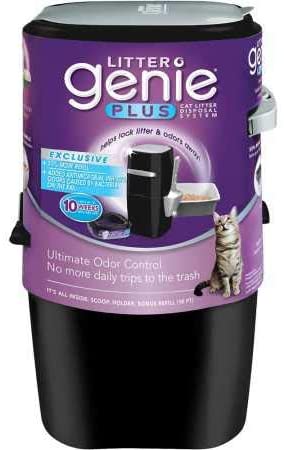
Insert the role of plastic bagging material inside the Genie, tie a knot at the end of it, secure it to a wheel, and turn the handle a half turn. Then open the top and drop in all the scoopings. Turn the handle again, and the waste is safely hidden at the bottom of the Litter Locker to keep all of the odors confined inside.
On trash day, just remove the bag of contents and discard it in its entirety in the garbage can.
If you’ve ever seen or used a Diaper Genie, you know exactly how this works. It is truly a genius!
6. What about liners?
Plastic cat box liners are not necessary, but it does make emptying a litter box of used non-clumping litter tidier.
If you are using non-clumping litter you will be changing it more often so you might consider using liners.
Just keep in mind, however, if you’re following the Nok-Out protocol described above, you won’t be emptying and throwing out litter. You will be scooping out solids, treating the litter that remains with Nok-Out, and then replenishing with fresh litter only as needed.
More reading
Nok-Out and SNiPER are absolutely safe around pets and children. The active ingredient in Nok-Out and SNiPER is chlorine dioxide.
Introducing Chlorine Dioxide clo2
The Effects of Chlorine Dioxide Around Animals
Everyday Cheapskate participates in the Amazon Services LLC Associates Program, an affiliate advertising program designed to provide a means for us to earn from qualifying purchases, at no cost to you.

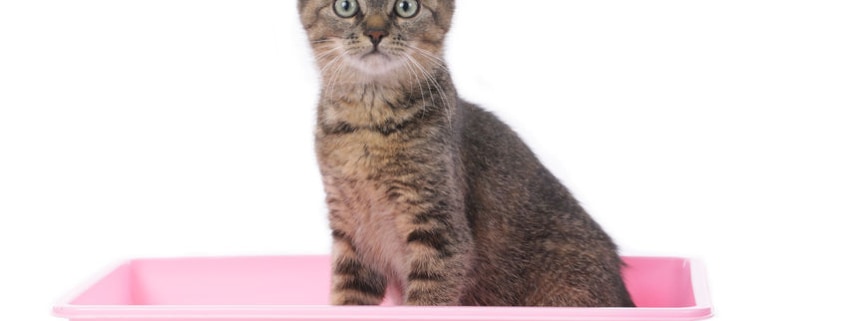

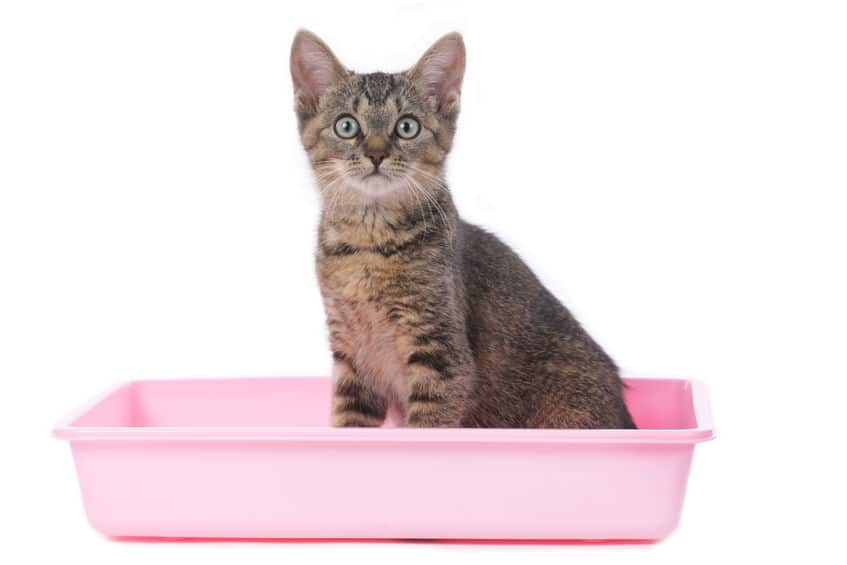
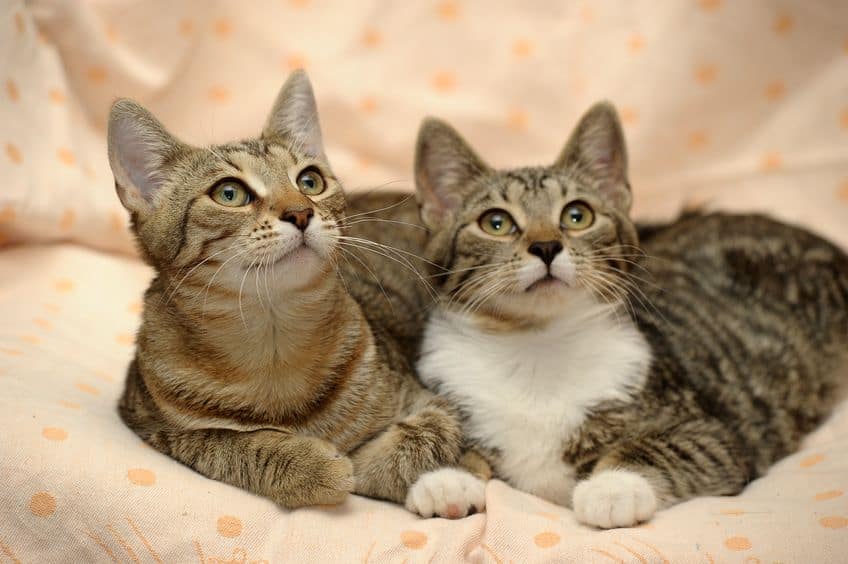
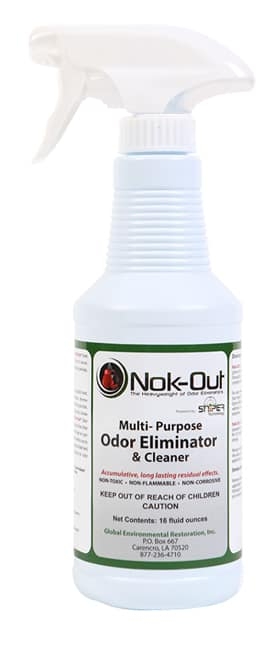
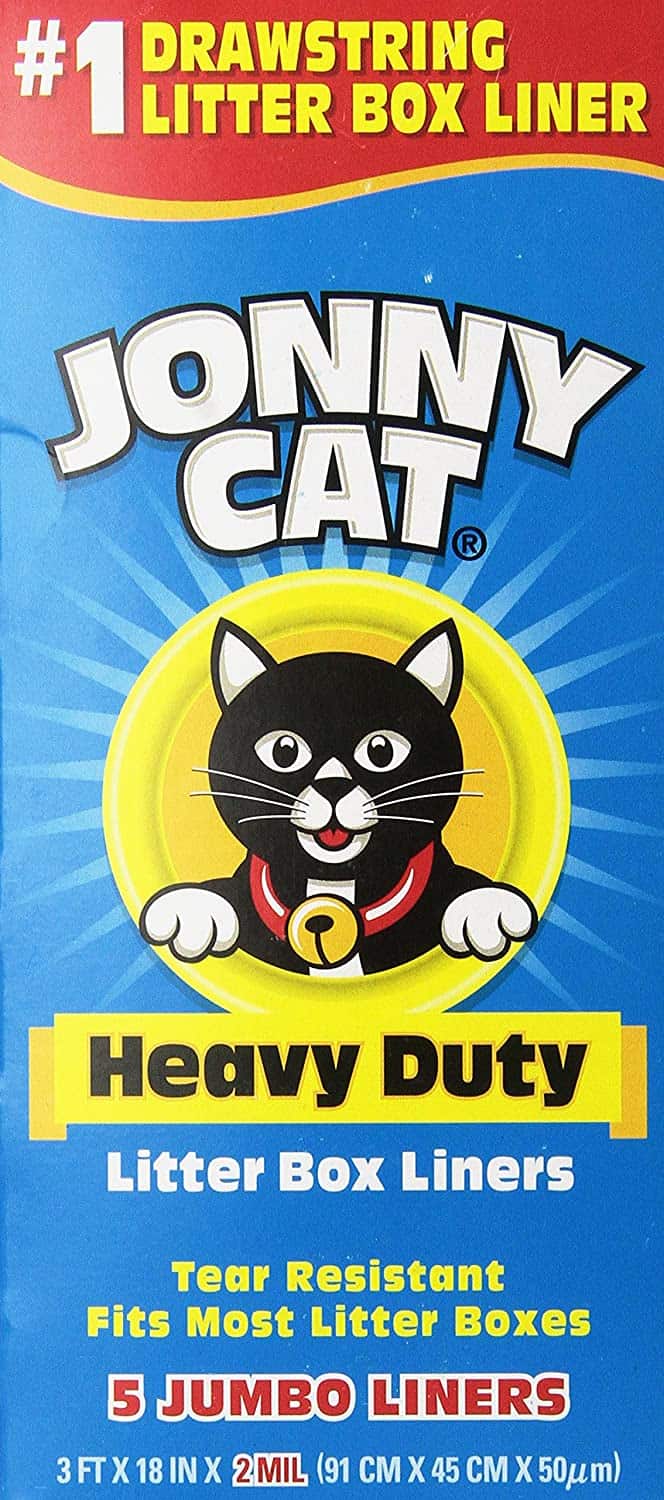


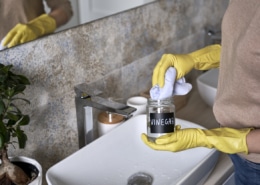
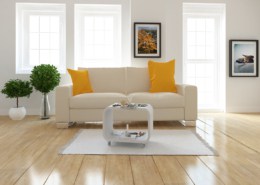
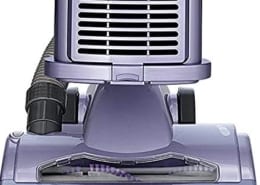
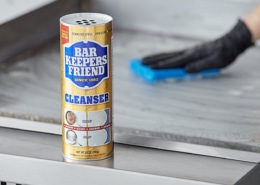
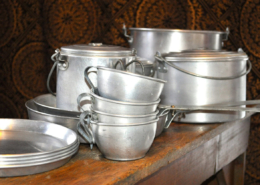
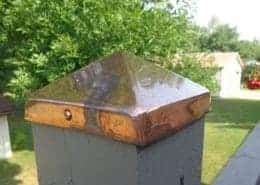
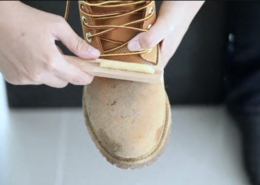
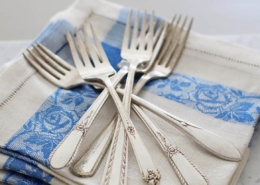


I recently found Wheat litter (sWheat Scoop) as I was looking for something a little more environmentally friendly. I LOVE it. I admit, I’m horrible about cleaning the litter box. This litter clumps and stays clumped so I can clean ALL the dirty litter at once. I found other clumping letter fell apart and ended up back in the box. I also use this to deter lawns pests (moles, etc) by putting the used kitty litter in their holes. I only have one cat right now and she goes in and out. BTW I have never had more than one bos per cat. I’d never heard of having one extra before. Good to know, as I am thinking about adding some kittens to our family in the spring.
I use a newspaper pellet type litter (I buy the generic unscented type from PetSmart.) There is no dust (my litter box is in the basement and everything was COVERED with litter box dust from Tidy Cat Scoop litter), and very little scattered pellets outside the litter box. I sprinkle baking soda on the bottom and the put in the litter. I sprinkle more baking soda on the top. I scoop out the solids everyday, and change the litter once a week. I love the idea of Nok-Out, but this litter is designed to absorb liquids. The pee makes the litter all crumbly, not a solid pellet any longer. I often add a little more litter to the box during the week. Works for me and for my cat.
I inherited 3 cats and we use 2 litter boxes. I get a free cardboard tray from Costco (you find them under the paper napkins) that I set the litter boxes in and that helps to cut down on litter tracking and being kicked out of the boxes. We used to use 2 covered boxes and Scoop Away litter from Costco but it got to the point that I could almost taste the litter from the dust smell. Then my boss told me about Feline Pine. I was skeptical but gave it a try and we LOVE it. It is a pine pellet that disintegrates into saw dust when peed on. Once we knew that the cats would use the new litter we invested in their special boxes that have a 2nd box inside that is a grid that the saw dust falls through to the bottom of the box.The poop has to be scooped out which we do at least 2 times a day. We place each box inside a kitchen trash bag and then put the 2nd tray inside of it. We “change” the litter 2 times a week which is super easy because we just pull off the trash bag that has the wet saw dust in it and discard. We only have to add a very small amount of litter to the boxes maybe once a week. There is no dust or smell other than fresh poop which we scoop and discard ASAP. At first the litter is expensive because you have to fill both boxes but after that you use very little of it. We bought a 26 pound bag back in mid March and still have at least half a bag. I am so happy with this litter and we are definitely saving money with it. Google Feline Pine for lots of information about it.
You can get 50 pound bags of pine at any hardware store for about 6 dollars. It’s the exact same thing as feline pine. It’s what I use. It’s marketed as a product to use in horse stalls.
Thanks for that info L. Even cheaper! I like it.
i have been using the pine pellets for 3-4 years now. so much better than cat litter – no dust. cats liked it and there is no odor. plus, as you said, it’s only about 6 bucks. pine pellets are the best.
We had three cats and the litter box situation was difficult as two were senior cats. We have a large area that was unfinished in the basement so I bought a wading pool at the end of the season. Lots of room, easy to get into and always a clean spot can be found. Years later it is still my litter box!
If you have more than one kitty, you’ll need more than one litterbox. Cats don’t like sharing bathrooms! Ideally, you would need one box per kitten and at least one extra.
Please reach out if ever we can be of assistance. As your Rochester, NY animal clinic, we here to help!
I used Scoop Away for years which I found heavily scented and way too dusty (I literally could not breathe). I switched to Arm & Hammer about 6 months ago and found no scent at all and have not noticed any dust to breathe (that was my goal). I scoop daily and use a small Dollar Store wastebasket lined with a 4-gallon trash bag and a homemade cardboard lid to keep odors inside. It works perfectly!
Another DVM weighing in…
Tidy Cat Breeze, y’all.
Ceramic litter pellets, a super absorbent ‘pee pad’ liner that is located below the litter compartment (urine passes through and collects on the pee pad below). And the system comes with start-up quantities of both.
Refills are affordable (and a bag of litter is not heavy), and can be frugally hacked, I’m sure.
System comes with a litter scoop, which hangs conveniently on the back of the box.
Hooded or non-hooded versions available, and the non-hooded version still has high sides.
No dust, no fuss.
Add a litter mat to catch the 1-5 pieces of ceramic litter that get kicked out occasionally, and a Litter Genie.
Hey, presto! You changed your life.
And I will be trying the Nok-Out suggestion.
Best to all.
I have had a Litter Genie for years and love it! The only reason I bought it, though, was because I found an Amazon review from a lady that had discovered a work-around to keep from buying the Litter Genie refill. You must at least start with the Litter Genie cartridge of “bags” (comes with the purchase of the unit). Then, when you get to the end of the plastic, SAVE the cartridge ring. Get a box of 500 Kirkland Signature 10-Gallon Wastebasket Liners from Costco. It will take a little practice initially, but you can fit one liner into and around the cartridge ring (hope that makes sense!). You put the empty bag through the ring, then tuck the top edges of the bag under the ring as you fit it back into place (same location as used with Litter Genie bags). You use one bag at a time, but only have to change it when it gets full–I’m able to change it once a week. I’ve been doing this for years and am still on my first box of bags from Costco.
My litter strategy is the opposite of the previous poster. We’ve found that keeping the litter level deeper (about 4″) prevents the dreaded “wet litter cemented to the bottom of the box”. I try to avoid breaking the clumps of urine so they don’t disintegrate and leave small pieces of soil that can’t be scooped. I’ve also found that Scoop Away litter does a much better job with the smells than other litters we’ve tried. On the down side, Scoop Away is heavy. The big one from Costco weighs 42 pounds. I have not bought a litter genie but instead use the cheapskate version: a small lidded bucket that I line with a small trash bag.
I like the Nok Out idea and will try that too.
A litter station is often a bad idea. If one of the cats is a bully, it will keep other cats from using the litter boxes. The bullied cat then goes elsewhere… Cat boxes should be in separate rooms and have multiple exits (if possible). Liners generally just get torn when the cat scratches/digs in the box. (If you want my qualification: 50 years of owning multiple inside cats, oh, and a DVM).
totally agree and also having several litter boxes in one area is still seen as just ONE potty option, even with more than one box. Boxes need to be distributed in different areas.
A trick I learned from the cat shelter where I volunteer: just use a small amount of litter (just enough to cover the bottom of the box). Dump out and clean the box at least once a day, preferably every time the box is used. Use the cheapest unscented litter. They use clay litter from a big-box store. After all, we don’t want to use an unflushed toilet. Neither do cats.